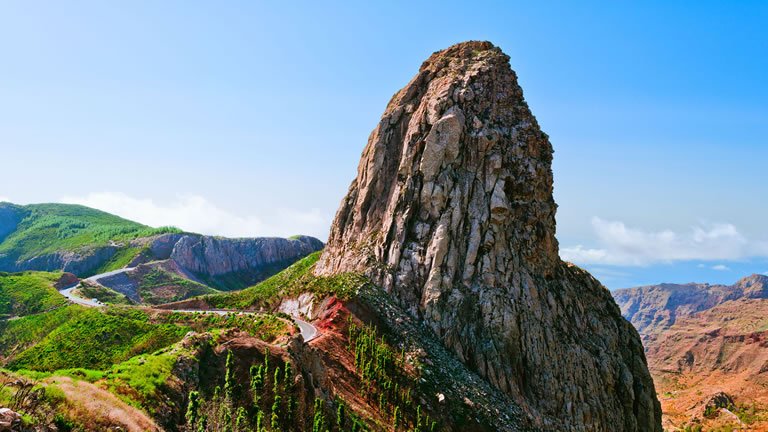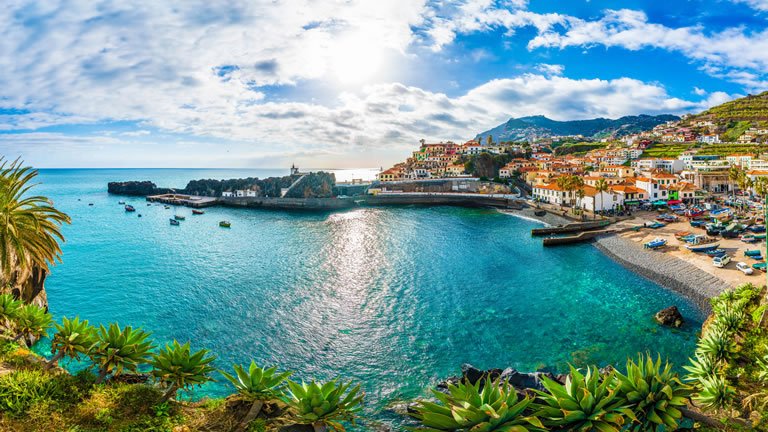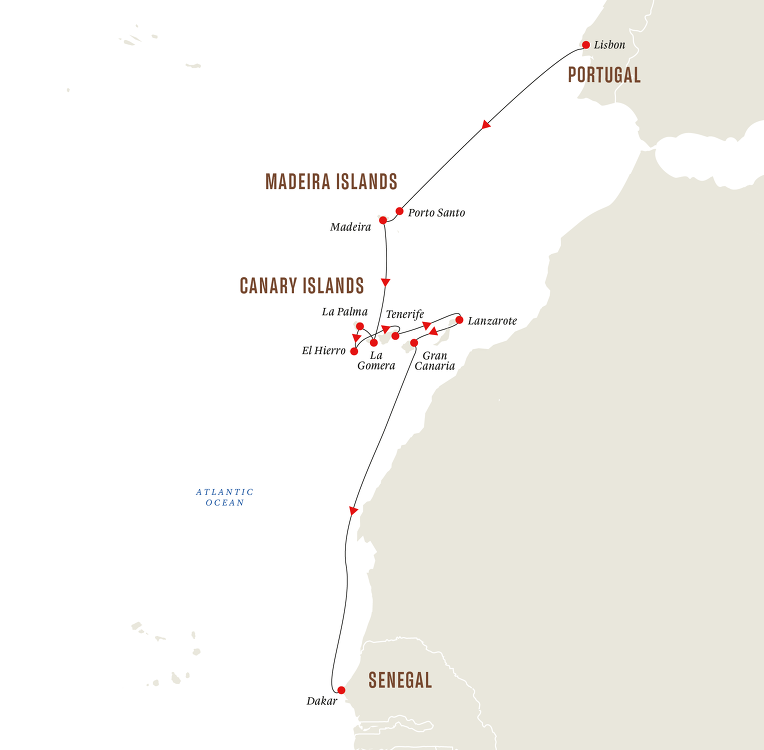Wonders Of Madeira And The Canary Islands - From Lisbon To Dakar
Overview
Itinerary
Your expedition starts in the fabled city of Lisbon. Built on seven hills along the shores of the scenic River Tagus, Lisbon ranks among southern Europe’s most enchanting cities — with a fascinating history to boot.
Located close to the Old Town, Lisbon Cruise Terminal is perfectly situated to explore the historical centre of the Portuguese capital on foot. A walk around Baixa, Bairro Alto, and Alfama, the classical districts of Lisbon, is essential. Almost everything of historic interest is here and a great number of small shops and boutiques.
Start at the Praça do Comercio in the Baixa district and make your way to Praça Rossio to see the statue of King Pedro IV before heading up to Largo do Chiado to explore the narrow streets of Bairro Alto. In Alfama’s labyrinthine streets around the old Islamic quarter you’ll find Lisbon Cathedral, the Roman amphitheatre ruins and the impressive 11th century Moorish fortress with panoramic views of the city.
Just outside the city you’ll find Torre de Belém and Mosteiro dos Jerónimos, both UNESCO World Heritage Sites. Closely connected to Portugal’s Age of Discovery and explorers such as Vasco de Gama, Belém is also home to the famously delicious Pastel de Belém custard tart – which you’ll definitely want to try!
To give yourself enough time and explore Lisbon`s many sights, we recommend you booking an extended stay or joining our optional Pre-Programme, including an excursion going to Sintra and visiting beautiful Monserrate Palace.
Once aboard MS Spitsbergen, you’ll settle into your cabin and attend a mandatory safety drill. Locate the Science Center, the Explorer Lounge and Bar, the restaurant, and the observation deck – you’ll be frequenting these areas. After the welcome dinner, you can sink into an armchair in the Explorer Lounge with a glass of wine – your expedition is underway!
Soak up the sun during a relaxing day at sea as we sail towards the Madeira archipelago. Shake off any stress and strain you came with and prepare to get into explorer mode. If you haven’t done so already, this is a great time to sample the ship’s amenities. Soak yourself in the hot tubs or work up a sweat in the gym or the panoramic sauna – this is your day to do what you like.
You won’t want to miss the fascinating lectures given by members of the Expedition Team as they share their knowledge of the region with you and prepare you for the adventures ahead. Lecture topics today may focus on Madeira’s history and wildlife, including birds and whales. Learn about the threat of invasive plant species on the island and how the local community is working to remove them from the National Park.
As our journey gets underway, spend some time getting to know the crew and your fellow explorers. Strike up a conversation at the bar and see what you have in common with your shipmates, or relax in a comfortable chair by a window and watch the sea pass by – it's totally up to you!
Porto Santo is so small it could fit into its sister island Madeira six times over. And yet, this dainty size is exactly what makes it so appealing. With Madeira getting all the attention, Porto Santo quietly offers those in the know a mix of picturesque scenery, gently rolling hills and miles of undisturbed sandy beaches.
Stay out on deck and scan for dolphins and seabirds as we approach the island. Cory’s Shearwaters, Northern Gannets and Great Skuas, are likely to be seen in the winter months. If you’re lucky, you might spot Sandwich Terns, Kentish Plovers, Manx Shearwaters and Bulwer’s Petrels as well.
We’ll dock for the day at Vila Baleira, Porto Santo’s small and compact capital. It’s an easy walk to the palm-lined square of Largo de Pelourinho where most of the island’s cultural landmarks lie. Start with the charming little church, Nossa Senhora da Piedade, built in the 15th century. Best known as the house where Christopher Columbus lived and had a son with a local noblewoman, the so-called Casa de Colombo is another must-see.
Go full-local and relax while sitting in a café sipping vinho do Porto Santo, the island’s distinctive reddish-brown wine. Undoubtedly, most visitors are drawn by the almost-five miles of golden sands that line the coast. You can take it easy and frolic in the turquoise waters or take one of several walks if you’re feeling energetic.
Walk all the way down to Ponta da Calheta on an optional excursion for gorgeous views over the craggy island of Ilhéu da Cal. An alternative hike will take you north to the summits of Pico do Castelo and Pico Branco, rewarding you with stunning birds-eye views. For something a little different, cross the island to drink the reputedly miraculous spring water of Fonte da Areia, said to guarantee eternal youth.
Enveloped by swathes of moist laurel forest, Madeira rises majestically out of the Atlantic in riotous shades of green. Generous layers of ferns, mosses and lichens cover volcanic rocks and ancient trees, creating a dense jungle habitat. Funchal, the island’s capital, is set in a natural amphitheatre on the sunny south coast. It couldn’t have a more idyllic location.
A quaint and yet cosmopolitan city, Funchal has lost none of its old-world charms. Wander down the narrow winding streets of the historic Old Town and delight in the painted woodwork of houses, shops, cafés, galleries, and museums. Be sure to sample Madeira’s famed fortified wines in one of the many bars and restaurants.
A visit to Funchal Cathedral is a must. Dating back to 1485, it has a beautiful wooden ceiling and is a classic example of Manueline architecture. A short walk from the cathedral is the historic farmers’ market, bursting with the vibrant sights and sounds of traders selling their fresh produce. Why not sample some local delights, including the exotic ananas-banana, literally – pineapple banana, which only grows in Madeira.
You’ll want to take the cable car to the picturesque village of Monte for glorious views of Funchal and the bay. While you’re up there, visit the 18th century Church of Nossa Senhora do Monte, and the paradisaic Monte Palace tropical garden. As you stroll around this landscaped haven, you’ll see its vast exotic plant collection, as well as art exhibitions from around the world.
For something truly memorable, slide your way back down to Funchal in exhilarating carros de cesto, or ‘basket carts.’ Essentially wicker baskets with seats set on wooden skis, hold on tight as you descend over a mile from Monte to Funchal!
To discover Madeira’s isolated hamlets, terraced agriculture fields and dramatic topography, feel free to join an optional excursion that takes you further into the interior.
After your days of exploration on land, you’ll be ready for a leisurely day aboard the ship. Recline in the panoramic Explorer Lounge, drink in hand, and take in the view. Watch the waters for whales and dolphins and keep an eye on the sky for seabirds. Now’s the time to reflect on your adventures so far, edit your photos, update your travel journal, and rest your legs.
By the time we reach the Canary Islands, you’ll be primed and ready for more exploring. Located off the western coast of Africa, the archipelago has a history of its own. Initially populated by peoples of Berber origin, the islands are reputed to have been visited by Phoenicians, Greeks, Carthaginians, and Romans, before the Spaniards settled in. Dominated by large active volcanoes, including the mighty Teide, the Canaries are ripe for exploration.
To better equip yourself and build excitement for the next part of your adventure, spend some time in the library reading up on the places you’ll visit, or attend lectures from the Expedition Team in the Explorer Lounge. Topics may include subjects such as the volcanoes of the Canary Islands, wine making, wildlife or botany.
The second smallest of the Canary Islands is also the most untamed. If you’re looking for an authentic slice of traditional Canarian life, La Gomera is the place to experience it.
Founded in 1487, San Sebastián is the charming capital of the island. Columbus called here before heading to the Americas, and so did British and Portuguese pirates, seeking to plunder New World fortunes.
San Sebastián is small enough to explore on foot. Stroll along the main street of the Old Town, Calle Real, to take in the best the town has to offer. The Iglesia de la Virgen de la Asuncion is a must-see church. A traditional Baroque style building, Columbus and his men are said to have prayed here before setting sail.
It’s a leisurely stroll to the 15th century fortress Torre del Conde, a beautiful whitewashed stone building in a lovely green space. Head to the intriguing Archaeological Museum of La Gomera, where you’ll learn all about the island’s first settlers and much more.
La Gomera’s steep ravines and narrow valleys caused the islanders to develop a unique way of communicating over long distances: a loud whistling called el silbo. Listening to a demonstration of this traditional form of communication on an optional excursion is always a highlight.
The top of this almost circular volcanic island is crowned by the jaw dropping Garajonay National Park, now a UNESCO World Heritage Site. Join an optional excursion to enjoy pleasant hikes through laurel forests and idyllic palm-covered valleys to high mountain walks and panoramic peaks.
A spectacular circular path follows the island’s perimeter, featuring trails that will satisfy walkers of all levels of fitness. While we won’t suggest you do the entire 87-mile length, a walk to the black sands of Playa la Guancha with its panoramic views will be well worth it.
La Palma more than lives up to its nickname La Isla Bonita, or ‘The Pretty Island’. Home to unspoiled pine and laurel forests, banana trees and palm groves, La Palma is certainly the greenest of the Canary Islands. Add rugged gorges, towering mountains, and sheer cliffs, and you have an island that has it all.
In the old days, Santa Cruz de la Palma served as a trading post on the way to the New World. Today, the island’s capital is widely considered one of the most attractive towns in the archipelago.
Start your exploration of the city by heading to Calle Real, Santa Cruz’s vibrant main street. You can’t miss the monumental Plaza de España, lined with magnificent Renaissance-era buildings, including Santa Cruz’s iconic city hall. For many, it’s the best example of Canarian architecture to be found.
You’ll see traditional wooden balconies lavishly adorned with plants and flowers on many streets. If you want to see the best examples, head to Avenida Maritima, just five minutes from the Plaza de España.
No visit to Santa Cruz would be complete without a stroll through the districts of La Canela and Sant Telmo, with their air of faded colonial glory. If you like quirky buildings, head to the eccentric La Palma Island Museum set inside an old convent. It has everything from natural history and local crafts to astronomy and art exhibitions.
Hiking in La Palma is superb, with some walks starting right in Santa Cruz. The most impressive areas to hike, however, are found further afield. The central highlands, the southern volcanoes and the spectacular Caldera de Taburiente National Park offer fantastic walks rated as among the best in the archipelago. Join us on an optional excursion and enjoy some of the best walking in the Canaries!
Only a million years old, El Hierro is the youngest, smallest and westernmost of the Canary Islands. You’ll feel that sense of remoteness the moment you set foot on the island. It’s a straight line across the ocean to the Americas from here.
Typical of the Canaries, El Hierro is a volcanic island with characteristic dark rocks shaped by eruptions, powerful winds and landslides. With the unique geology of an oceanic volcano in the early stage of shield development, it’s no wonder that UNESCO has classified it as a World Biosphere Reserve.
El Hierro lacks natural harbours, so most of the villages are inland. Valverde, the only landlocked capital in the Canaries, is just over four miles away from La Estaca, our port for the day. Founded in 1610 – much later than any other capital in the Canaries – Valverde is a relaxing small town. You won’t find traffic lights or fancy shops here, just the easy-going atmosphere of the most traditional capital in the archipelago.
By far, walking is the best way to explore El Hierro. On an optional excursion, you’ll visit the island’s natural highlights, which are conveniently crisscrossed by a network of marked trails suitable for all fitness levels. Discover shimmering natural pools, lava-sculpted rocks, pine forests, peaceful flower meadows and twisted trees bent by the force of the elements. By the time we wave goodbye to El Hierro, you’ll have a heightened appreciation of this beautiful gem of an island.
Legend has it that when Alexander von Humboldt landed on Tenerife’s coast one misty morning in 1799, he found the view underwhelming. That is until the fog lifted, and the first rays of sun illuminated the white summit of Mt. Teide. Just a day later, he was on his way to the peak – lured by an almost magnetic pull that many find irresistible. Welcome to Tenerife, the largest of the Canary Islands.
Santa Cruz is the joint-capital of the Canary Islands and features a vibrant harbour, some charming old-world appeal and a slick modern edge. The imposing Plaza de España, located close to the port, is the best place to start exploring the city. From here, walk uphill to the Plaza de la Candelaria and take in the facades of the old Casino and the 18th century Palacio Carta.
Calle del Castillo is a popular place for browsing small shops. The grid of ancient streets intersecting it is the historic heart of Santa Cruz. Look out for the beautiful plazas of Príncipe de Asturias and Los Patos as you explore, and head for the García Sanabria Park for a genuine feast of the senses. Filled with tropical flowers, ferns and other plants, you’ll discover sculptures hidden among the trees and art exhibitions.
No visit to Tenerife would be complete without checking out Teide National Park and its centrepiece, the colossal El Teide. Join one of our optional excursions to the world’s third-largest volcano. Rising 12,198 ft. above sea level, it’s large enough to create its own weather system on the island. Get ready to explore a unique landscape of craters, volcanic cones, ancient rocks and streams of petrified lava.
Naturally, the hiking opportunities offered in the National Park are outstanding. Various trails of differing lengths take in some of the most scenic vistas in the archipelago. Just be sure to bring a sturdy pair of hiking shoes or boots, and of course, your camera.
The easternmost island of the Canaries archipelago, Lanzarote’s spartan, desert-like landscape, stands in sharp contrast to its lush green siblings to the west. Featuring a terrain fashioned by eroded volcanic formations, deep U-shaped ravines and vertical cliffs give way to a wide central plain covered with aeolian sand. Lanzarote is a geologist’s dream!
Long before Arrecife officially became the island’s administrative centre, it was a popular fishing port. Today, it’s a welcoming sun-kissed town with bags of charm. Walk over the bridge to visit San Gabriel, one of two castles that overlook the harbour. Learn a little of the island’s history in the tiny museum and soak up great views from the castle.
It’s a short walk to Arrecife’s Old Town, which spreads around the Charco de San Ginés lagoon. Elegantly whitewashed fisherman houses, brightly-coloured boats bobbing in the water and lively bars and restaurants combine to form a pleasant maritime atmosphere. Stroll around this charming area and check out the main historical buildings. Visit the 17th century church San Ginés and, around the corner, Arrecife’s first two-storey building, the 18th century Casa de los Arroyo.
When you’re done sightseeing, take a seat in an outdoor restaurant, order tapas and a drink, and enjoy life in one of the sunniest places on Earth.
Lanzarote’s ace in the hole is the quality of its stunning beaches. Head to El Reducto, the town’s main beach. Protected by natural reefs, this white sand beach resembles a large pool. Featuring clear, calm waters, it’s the perfect spot for some sunbathing.
Alternatively, you can join an optional excursion to discover Lanzarote’s natural wonders. The spectacular volcanic landscape of Timanfaya National Park, the famous Jameos del Agua lagoons and long lava tubes are all within easy reach. And don't be fooled by the lack of mountains – hiking the volcanic trails of Lanzarote is a unique experience not to be missed!
Our next stop is Gran Canaria, the third-largest island of the Canarian archipelago. Full of history, Gran Canaria has seen pirates, privateers and explorers – including Christopher Columbus himself – come and go. And over the past few decades all manner of geologists have descended on the island to study its volcanic terrain. Now it’s your turn to discover this ‘continent in miniature’, before you head back home.
In terms of diversity, Gran Canaria has it all – dunes, subtropical valleys, deep ravines, palm-dotted oases, pine forests, spectacular cliffs and jagged mountain ridges. And that’s before we mention sunshine, beaches and the sea. Gran Canaria has more than 60 miles of beach! And there is no need to go far, as the beach scene starts in the capital, Las Palmas itself.
Head to Vegueta, the Las Palmas’ Old Town district where it’ll feel like you’ve travelled back in time. Stroll through narrow cobbled streets and alleyways and admire the old churches and brightly-coloured colonial houses.
The Cathedral of Santa Ana is the focal point of Vegueta. Dating back to 1497, it’s one of the most impressive buildings in the Canary Islands. Make sure you visit the bell tower for panoramic views over the Old Town, the harbour and beyond.
Most of the island’s natural features are now listed as a UNESCO Biosphere Reserve and are made for walkers. Gran Canaria has almost 620 miles of marked trails – and many of them are incredibly old, established to connect isolated villages during the first decades of the Spanish conquest. Leave the coast, get onto the trail network, and you’ll probably have the landscape pretty much to yourself.
The volcanic basin Caldera de Tejeda is right in the heart of the mountainous interior. Home to the sacred Roque Bentayga rock formation, this is an excellent area to explore and learn about the fascinating volcanic history of the islands.
From Las Palmas, we’ll sail south along the western coast of Africa. For the next three days, you’ll rest, enjoy the ship’s facilities and take stock of what you’ve experienced so far. Why not take advantage of the silence and serenity that comes with being out at sea by undertaking a digital detox? Undisturbed by your devices, you’ll re-engage with yourself and with nature, nourishing your mind body and spirit.
Though out of sight, you’ll feel the effects of the enormous mass of the Sahara Desert as we approach West Africa’s coast. The increase in temperature and the decreasing humidity in the air are all tell-tale signs of our proximity to the largest hot desert in the world.
In stark contrast to the desert environment of the Western Sahara and Mauritania, the waters we’ll be sailing to are full of life. The cold waters of the Canary Current mix with the much warmer waters of Western Africa, causing a huge upwelling that brings nutrients close to the surface.
Wildlife and fishermen alike take advantage of the high productivity of the sea. For us, this means good opportunities to spot cetaceans and sea birds. You might catch sight of dolphins and whales including short-finned pilot whales, humpback, sei, and even blue whales!
Learn about the fascinating waters we are crossing with our lecture programme, and relax at your own pace as we sail to our destination. By the time we reach the port of Dakar, you’ll arrive with your spirits lifted, and your mind brimming with new knowledge.
Your expedition cruise ends in Dakar, Senegal’s colourful and animated capital. Located at the tip of the Cape Verde peninsula, it’s the westernmost city in Africa and all the Old World. Dakar is a low-rise, cosmopolitan place, famed for its buzzing music and arts scenes. The city enjoys a laid-back atmosphere, and the people are as friendly as the buses are vibrantly coloured.
The peninsula on which Dakar lies projects westwards into the ocean and was formed when offshore volcanic islands were joined to the continent by a land bridge. The exposure to humid winds from the sea keeps the vegetation lush, in stark contrast with northern Senegal’s barren and desert-like landscape. Hence its name, Cap Verte, meaning Green Cape. Nowadays, Dakar is the country’s capital and the most influential city in all of Western Africa.
After disembarkation, we’ll take you on our Dakar City tour taking in the main sights of Senegal`s capital. The city’s beating heart is the district of Medina, with its maze of streets, the bustling market of Marché Tilène and the imposing Grand Mosque. Other notable landmarks include the Independence Square, the African Renaissance Monument, the Cathedral and the west and east Corniche.
No doubt you would have worked up quite an appetite after all your sightseeing. We’ll take you to a hotel where you’ll enjoy lunch and a relaxing afternoon. Feel free to make the most of the hotel’s amenities before you head back home. If you’d like to stay longer in Dakar, you are welcome to book extra nights in the hotel. Whatever is next for you, we look forward to welcoming you back on your next adventure.
Life Onboard MS Spitsbergen

Intimately scaled and perfectly designed to take the scenic route; enjoy open viewing spaces and Scandinavian touches. Read more

Destinations come to life with a Guide Team on classic coastal voyages and an Expedition Team on expedition sailings. Read more

From cosy inside cabins to luxurious suites, the perfect home away from home awaits for every cruiser. Read more

Enjoy a delightful menu crafted from fresh ingredients and locally sourced produce served up in the main restaurant. Read more
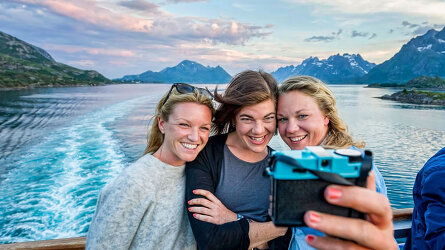
Enjoy Hurtigruten's famously relaxed atmosphere and cruise comfortably day and night, with no need to change for dinner. Read more

Make use of the wellness and recreation facilities on board, including a gym, sauna, and outdoor hot tubs. Read more
Availability Click on prices below to view cabin upgrades and details
Tour & cruises prices are per person. Prices shown have savings applied, are subject to availability and may be withdrawn at any time without notice. Prices and trip information are correct at the time at this point in time, however are subject to confirmation at the time of booking and are subject to change by Hurtigruten. For cruise itineraries, cabin images are sourced from Hurtigruten. These should be treated as indicative only. Cabin inclusions, upholsteries and room layout may differ to the image(s) shown depending on the ship selected and your sailing dates.
Similar Cruises
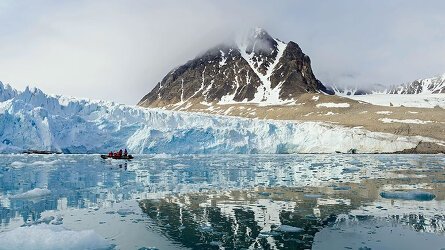
16 Days Oslo Reykjavik
Operated By: Hurtigruten
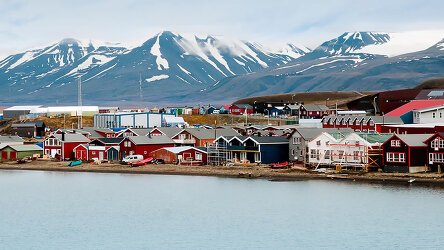
16 Days Oslo Reykjavik
Operated By: Hurtigruten
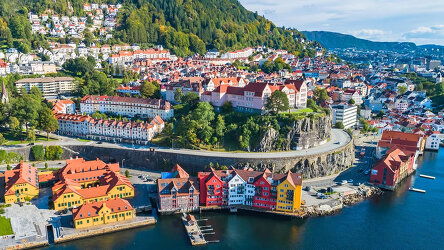
16 Days Oslo Bergen
Operated By: Hurtigruten
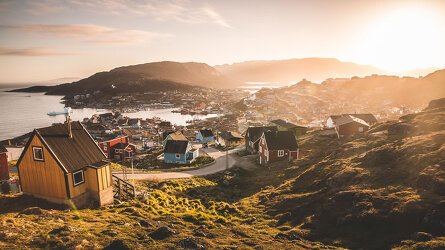
16 Days Reykjavik Reykjavik
Operated By: Hurtigruten

